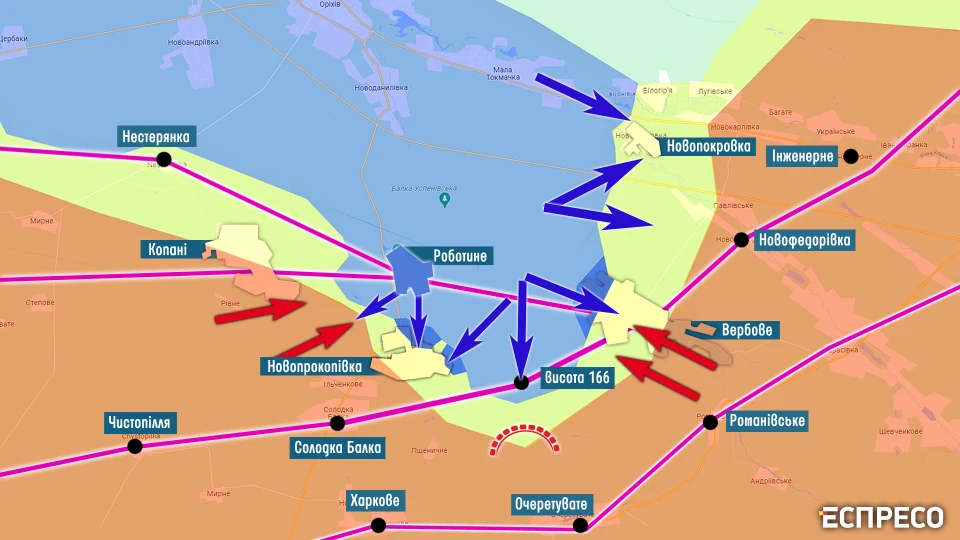
Real competition among foreign manufacturers to supply new weapons to Ukraine begins – military expert Zgurets
Foreign partners are discussing the supply of ASCOD BMPs from General Dynamics to the Ukrainian Armed Forces in a short time; earlier, there was also talk with BAE Systems, which produces the Swedish CV-90 BMP, about re-equipping Ukraine's army with new BMPs
New weapons for Ukraine's Armed Forces
A competition is brewing between American and European arms manufacturers to supply new weapons to Ukraine's Armed Forces. On September 26th, Ukrainian Armor announced discussions with foreign partners about supplying the ASCOD infantry fighting vehicle to Ukraine's military in the near future. General Dynamics European Land Systems, the European branch of the American company General Dynamics that developed the ASCOD, and the Eastern European company Czechoslovak Group will also participate in the licensed production of the ASCOD IFV.
The ASCOD is a versatile platform that can be equipped with various combat modules and guns of different calibers, including 105mm and 120mm, effectively turning it into a light tank. This development introduces intrigue because it was previously understood that Ukraine's plans to upgrade its infantry fighting vehicles were based on agreements with BAE Systems, the producer of the Swedish CV-90 IFV.
Initially, Ukraine had expressed interest in producing approximately one thousand CV-90s. However, it's now apparent that competition is emerging as licensed production in Ukraine forces the main partners, BAE Systems and General Dynamics, to approach the Ukrainian market differently.
The CV-90 and ASCOD share similarities, making it crucial to assess both performance parameters and quality. When considering price, information from negotiations with General Dynamics suggests that an ASCOD with a 30mm module could cost around 5 million euros. This competitive pricing is attractive compared to the CV-90 from Sweden, which was purchased by the Czech Republic and Slovakia at a price ranging from 8 to 8.5 million euros per vehicle.
As licensed production and capacity deployment begins in Ukraine, competition is unfolding. Key factors such as cost, performance, and armor protection will play a vital role in the decision-making process.
This marks the initial stages of an essential journey to modernize Ukraine's Armed Forces. The competition should ultimately result in the acquisition of effective, high-quality, and relatively affordable machinery. Acquiring new equipment is crucial, given the ongoing conflict with Russia, and it complements the importance of developing Ukraine's own military industry in the long term.
Frontline situation in the South
Currently, we are “negotiating” with the enemy on the front line, with each section having its unique challenges. The primary attention is on the afternoon offensive, where our troops are breaking through the enemy's multi-layered defenses. This is particularly tough near Robotyne due to strong enemy resistance.

Recently, Oleksandr Tarnavskyi, the commander of the "Tavria" operational direction, mentioned that Ukraine's most significant breakthrough in this counteroffensive is still ahead, possibly occurring after Tokmak. He also emphasized that Tokmak is just a starting point, and we aim to reach Ukraine's state borders if the winter conditions don't slow us down.
However, Tokmak is still 18 kilometers away, and the General Staff of the Armed Forces of Ukraine is providing updates on the situation in the south. People are closely monitoring developments through satellite images and videos from both sides of the conflict.
Viktor Kevliuk, an expert from the Center for Defense Strategies and a retired colonel of the Armed Forces of Ukraine, reported that over the past week, the "Tavria" strategic group made progress towards the southwest and west of Verbove. They secured the Polohy - Voskresenka highway, reached the northern outskirts of Verbove, and engaged in combat in Novoprokopivka and near Robotyne. The enemy attempted an attack near the village of Kopani using the 76th Airborne Assault Division and the 387th motorized rifle regiment of territorial troops from the newly formed 44th airborne division. Russian forces also launched unsuccessful attacks near Mala Tokmachka, Novodanylivka, and Verbove.
Colonel Kevliuk noted that both sides face challenges due to extensive minefields, elaborate defensive positions, and limited maneuverability. Additionally, numerous engineering obstacles and natural barriers complicate the fighting. Despite these challenges, the "Tavria" group has been making steady progress by focusing on weakening the enemy through sustained firepower.
In the Zaporizhzhia direction, the enemy's strategy involves defending previously captured territories and attempting counterattacks whenever possible. Although these counterattacks rarely succeed, they require our forces to divert attention and resources. The enemy also aims to inflict losses on our troops.
Regarding ATACMS missiles with cluster warheads, Kevliuk highlighted their threat to enemy targets within a range of up to 160 kilometers, with even greater danger if we acquire a 300-kilometer variant. These missiles can target lightly armored assets such as jump airfields, elements of the air defense system, command posts outside of protected structures, and communication nodes. However, Kevliuk emphasized that missile strikes alone won't secure victory; we also require artillery support and ideally strike aircraft. Combining missile troops, artillery, and strike aircraft would greatly enhance the operational success of the "Tavria" group.
Kevliuk believes that there isn't a covert mobilization in Russia but rather a planned recruitment effort to maintain the minimum acceptable troop levels for combat operations. Russian forces mainly consist of contracted personnel. If the enemy intends to launch an offensive next spring, they will need to form strategic reserves since all available forces are currently deployed. To accomplish this, mobilization in Russia must begin promptly, or they won't have sufficient time to prepare.
Technological advancements in electronic warfare systems for the AFU
Now, let's discuss advancements in countering the enemy's technological advantage, particularly in the realm of electronic warfare systems (EW). In Ukraine, we've made significant strides in a short span of time, developing trench EW, object-based EW, and mobile EW systems. Several Ukrainian companies are now actively producing and innovating new models to aid our Armed Forces in countering enemy drones and disrupting their communication systems.
Yuriy Momot, Deputy General Director of Piranha Tech, mentioned that their company strives to introduce new EW system developments for testing every two months. Their primary focus currently lies in protecting equipment from FPV drones and drones used for data breaches. One such system currently undergoing testing is a versatile setup comprising modules designed to interfere with enemy drone operations. This development can disrupt the full spectrum of frequencies utilized by enemy FPV drones.
The Deputy General Director of Piranha Tech also highlighted the primary clientele for these innovations, which include charitable organizations, city administrations, village councils, and private individuals who support specific military units. The Ministry of Defense is actively considering the procurement of some of these tested samples, indicating a growing demand for these advanced EW systems.
- News












































